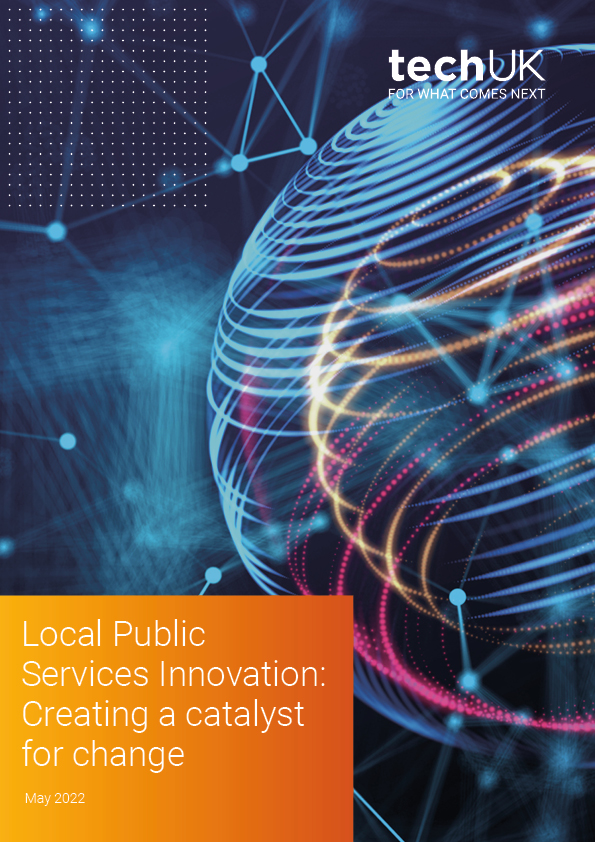Guest blog: The future is in how we connect communities
Only by automating processes, integrating systems and becoming more commercial can Local Authorities build more connected, smarter communities. With the expectations users have from commercial digital services (Amazon being the overused example), just-in-time delivery to devices is the tip of the digital iceberg for local digital services.
In the age where people need and are used to, real-time information and push notifications (for example, smart meters, gaming, social networks, news and financial content), keeping people in the community ‘connected’ has never been more important.
Will Augmented Reality make us superhuman?
We’re now facing a revolution. Powerful converging technologies will start to entirely transform how we think, work and live. Artificial Intelligence will exponentially speed up every aspect of human and machine interaction, whilst Augmented Reality will be used to inform and amplify our interaction with all aspects of our everyday lives, and how we work and travel. Along with other key technologies such as Robotic Process Automation, IoT devices, Blockchain technology and the promise of Quantum Computing - the raw processing power of computers working in a decentralised web means that those expectations from users aren't going to subside, but increase by orders of magnitude.
We constantly hear from C Level leaders in Local Government - how their aspiration is to deliver the ‘Amazon Experience’. Well, Amazon spends $43 billion dollars a year on R & D - and we can’t even come close to that kind of spend on digital services in the local context. Whilst Amazon are researching ‘Anticipatory Shipping’ algorithms (sending you products, before you order them), we in Local Government are still looking at how we will use data to drive everyday operational decisions.
So, low-code platforms are now becoming the mainstay of digital service delivery. Why? Because Local Authorities and Government Departments simply cannot afford to build it all in-house and even if they could, the current churn in technology and UX talent makes it unsustainable.
The future has to be sustainable
In the times of the great resignation, where post pandemic and now war-time economics are driving the growth of software and technology much faster than ever before, how will local public service organisations attract and retain technology talent? Software Engineers, Designers, Researchers, Data Analysts and Digital Project Managers are highly sought after by large businesses everywhere in the World. How will a local authority build its own digital stack and then maintain it in the future? Who will conduct the user research? How will they afford the top salaries commanded by the sector? Where will the digital leadership come from?
The answers lie in delivering services built on consumption based digital platforms that are low-code and enable rapid delivery of end-to-end digital services. This means resources can be better focused on good design. User research and service design.
However, for that ‘just-in-time’ end-to-end service to be designed and developed in a way that is meaningful, it needs to be integrated. We cannot rely on customer service agents in front of multiple computer screens, to manage all of the exception handling and failure demand in repeat calls, progress updates and constantly busy telephone lines coming into the contact centre. We absolutely cannot depend on the ‘swivel-chair’ integration model, where rekeying causes huge inefficiencies.
So the investment has to be in automation and integration, particularly with back office line-of-business applications. In order to fund that, Local Authorities should be looking to make digital service delivery a sustainable channel, leveraging both low-code technology to mitigate the inevitable recruitment and talent retention challenges, as well as making efforts to behave more commercially to bridge the significant funding gaps that now exist for almost all local authorities and public services.
The challenge will be in delivery, not in technology. Local Government struggles to balance simplicity over complexity (to redesign their processes to be simpler, digital services). In addition with the need to build everything in-house that is the trend in government in the UK at the moment, what we have is an increase in demand for scarce digital talent with a decreasing budget and high operating costs. Whilst open source, code-sharing and establishing digital standards are critical, what use are these foundations if there is no one in place to adopt, implement and maintain software and digital services?
It is therefore important to reduce costs to serve by eliminating wait times and keeping communities (our customers) notified and getting digital services out to where they are needed most. For that we must use data to drive decisions.
We are already at the beginning of a fundamental transition to a different kind of world, with a different way of living. This will change not only our interactions, but how we interface with technology. The need for user research has never been more pronounced. We have to keep pace with that transition by leveraging everything that digital platforms have to offer - and investing in those platforms is the only way to do that and make it sustainable.
Suraj Kika is CEO of Jadu a leading provider of low-code CRM, website and Forms software for customer digital services.
Twitter: @surajkika and @jadu
Local Public Services Innovation: Creating a catalyst for change
techUK, in collaboration with its Local Public Services Committee, has published a new report making the case for enhanced digital innovation adoption across the UK’s local public services to improve citizens’ lives. The report, ‘Local Public Services Innovation: Creating a catalyst for change’








